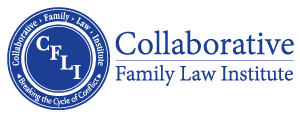The Value of the Collaborative Process
Written by Brenda Shapiro
Thirty-two years ago, I became a family lawyer thinking it meant I was going to get people divorced. It doesn’t. Family lawyers help clients accept change in their family life whether through dissolution of marriage, adoption, or shared personal partnerships. Collaborative Law at last provides a process to do all those life-changing things in a safe, confidential, way. When parties litigate lawyers ask a Judge to decide when the client can see his or her children and how much of what is theirs, they have to give away. In a Collaborative case, a Mental Health Professional, a financial expert and two Collaboratively trained lawyers help couples decide when they see their kids and how much of what they have, they can keep.
The important part of a Collaborative case is you work with a team to help solve complex problems. Each client is an active participant in the problem-solving process because, of course, it is their problem. The professional team is at your direction to bring their expertise in law and fiancé to explore your options with you. The Mental Health Professional helps you craft a parenting plan and navigate the clients and the team through this safe harbor, safe because it is confidential, and your privacy is protected.
Best of all, the time it takes to cruise down the unfamiliar river of dissolution takes less time than litigating your case which has you swimming upstream against the tide. The average litigated family case takes twelve to eighteen months as you push against judicial calendars, each judge having approximately 2,000 cases. Most Collaborative cases are concluded within six to eight months. Yes, time is money.
You don’t see the Judge until all the work is done and you have an agreement for the Judge to stamp. In a collaborative case, the Judge is happy to see you at the very end because he/she appreciates that you and your team have done the work, and the Judge doesn’t have to decide anything. You did!
